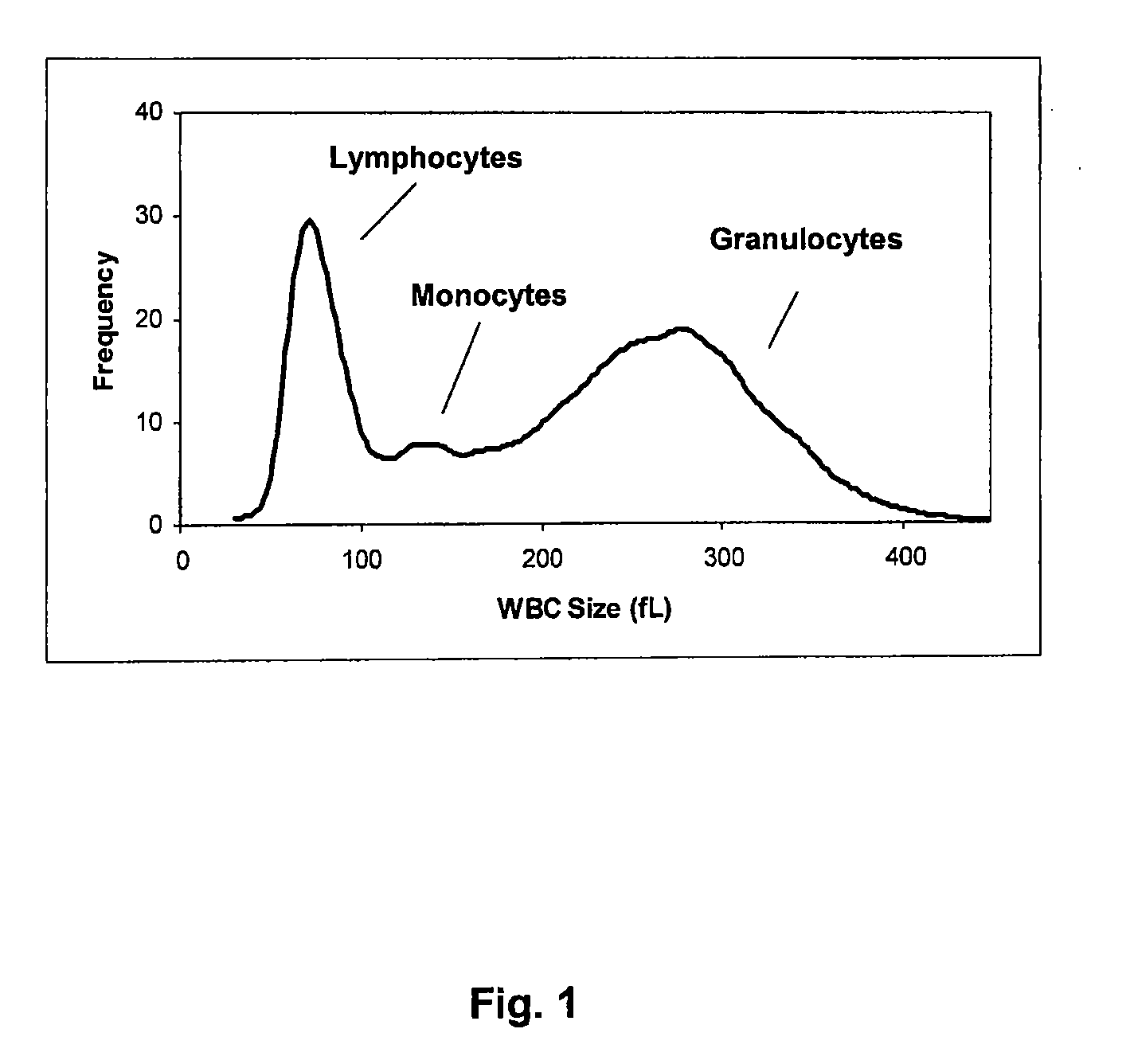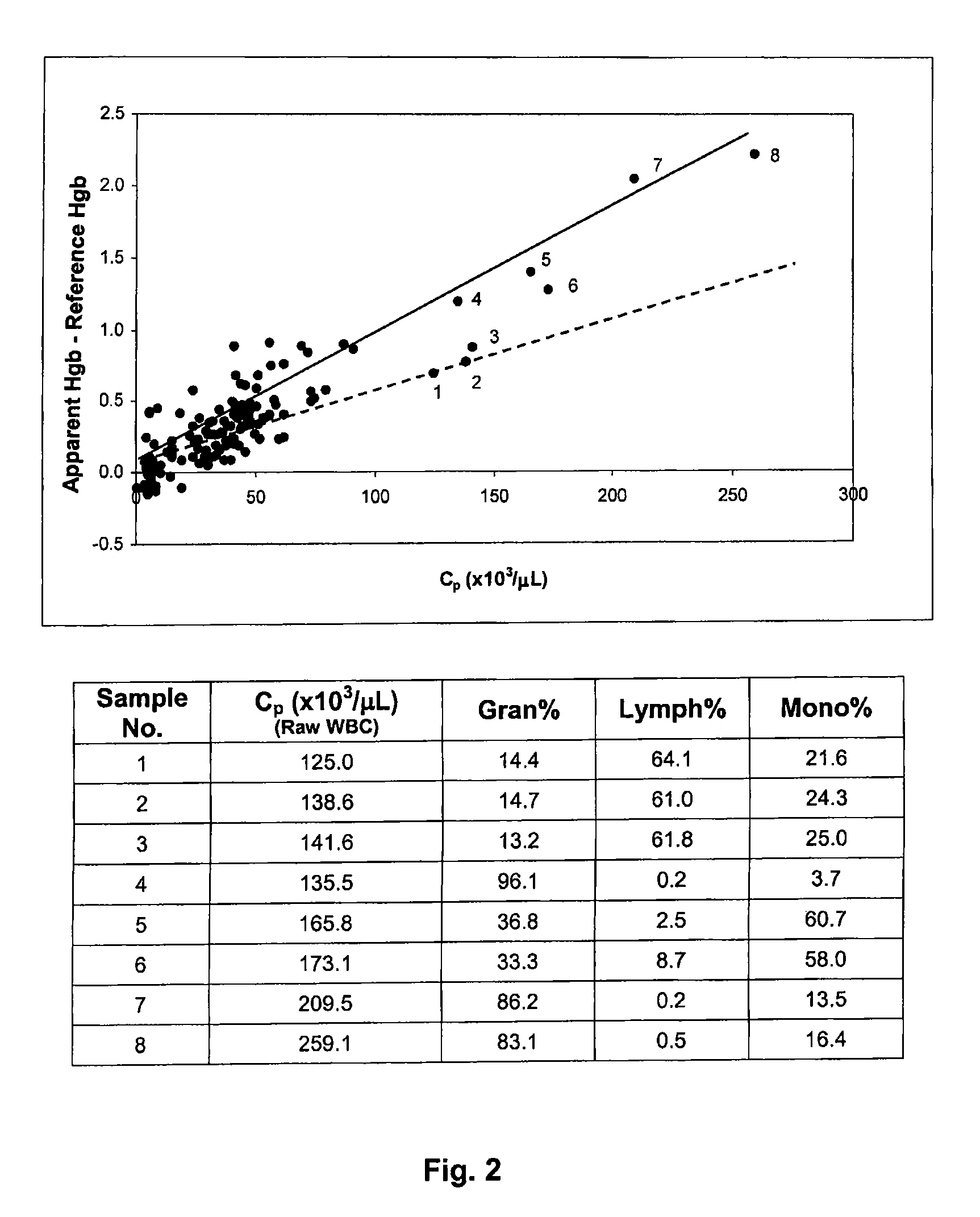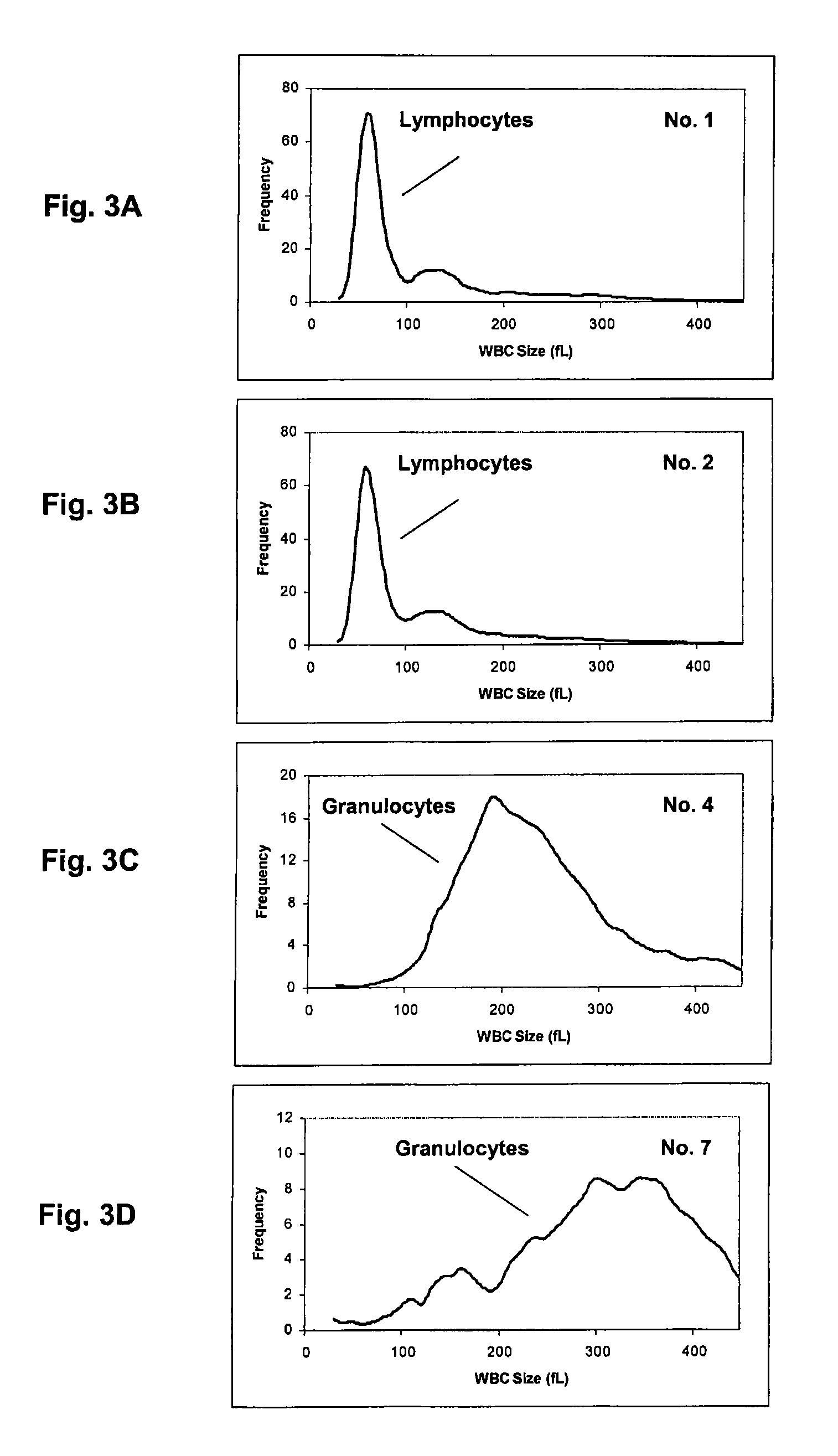Method of correction of particle interference to hemoglobin measurement
a particle interference and hemoglobin technology, applied in chemical methods analysis, instruments, investigating phase/state change, etc., can solve the problems of significant overestimation of hemoglobin concentration, interference of cellular particles present in sample mixture with spectrophotometric measurement, and altered hemoglobin levels
- Summary
- Abstract
- Description
- Claims
- Application Information
AI Technical Summary
Benefits of technology
Problems solved by technology
Method used
Image
Examples
example 1
[0145]An experimental hematology analyzer, which included a WBC chamber equipped with a DC impedance detector and a hemoglobin measurement device having a cuvette fluidly connected to the WBC chamber, was used for analysis of the blood samples of interest. The hemoglobin measurement device included a light source projecting a light on the cuvette and a light detector detecting the light transmitted through the cuvette at about 540 nm. Transmitted light was used to calculate hemoglobin concentration of the blood sample being measured. The hematology analyzer also included a RBC chamber equipped with another DC impedance detector for measuring red blood cells and platelets using DC impedance measurements. Each of WBC chamber and RBC chamber has three non-focused flow apertures. The hematology analyzer measures concentration and size of white blood cells and red blood cells in a blood sample by DC impedance measurements.
[0146]In measuring hemoglobin and white blood cells, a first aliqu...
example 2
[0155]Two cellular analogs were used together a normal fresh whole blood sample to prepare two series of test samples to simulate high white blood cell samples having different sizes of white blood cells. The whole blood sample had hemoglobin concentration of 13.99 g / dL and WBC of 9.73×103 / μL as reported on a Beckman Coulter LH750 hematology analyzer (product of Beckman Coulter, Inc., Fullerton, Calif.). Hemoglobin and white blood cell measurements on LH750 hematology analyzer were performed using the same detection mechanisms described in Example 1, using Lyse S III diff and Isoton 3E as the lytic reagent and the diluent, respectively (both reagents were product of Beckman Coulter, Inc., Fullerton, Calif.). The LH750 hematology analyzer was calibrated and operated under the standard operation condition recommended by the manufacturer.
[0156]The first cellular analog was made of fixed human red blood cells, which was used as an analog to simulate lymphocytes in reference control prod...
PUM
| Property | Measurement | Unit |
|---|---|---|
| wavelength | aaaaa | aaaaa |
| wavelength | aaaaa | aaaaa |
| wavelength | aaaaa | aaaaa |
Abstract
Description
Claims
Application Information
 Login to View More
Login to View More - R&D
- Intellectual Property
- Life Sciences
- Materials
- Tech Scout
- Unparalleled Data Quality
- Higher Quality Content
- 60% Fewer Hallucinations
Browse by: Latest US Patents, China's latest patents, Technical Efficacy Thesaurus, Application Domain, Technology Topic, Popular Technical Reports.
© 2025 PatSnap. All rights reserved.Legal|Privacy policy|Modern Slavery Act Transparency Statement|Sitemap|About US| Contact US: help@patsnap.com



